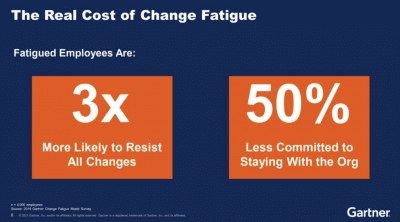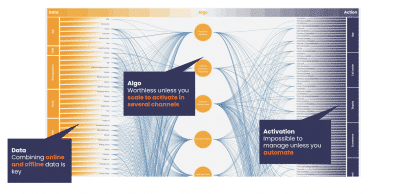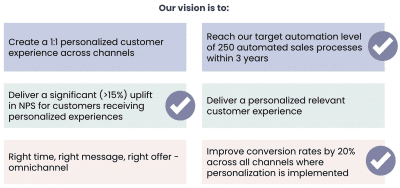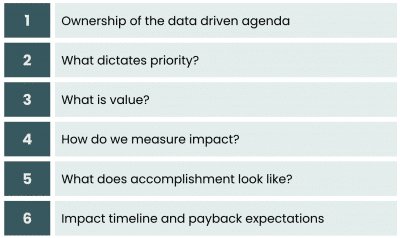There is a challenge ahead for all Nordic and European companies to re-invent themselves for the age of AI to be able to sustain a competitive advantage in their local market. Becoming data-driven is a key priority across industries as it is the most effective approach to grow top-line and improve efficiency. This blog highlights some advice and ideas for you to consider as you tackle the challenges ahead of you to become automated while keeping your team sane.
Algorithms will not benefit you until you can scale and automate them across all of your organisation’s action channels, which might include anything from physical salespeople to push messages on an app, personalised experiences, content recommendations, E-commerce processes, and so on. In the future, all of these different domains will need to be Algo powered, and you won’t be able to achieve that unless you automate.
That is why becoming data-driven is about automating at scale rather than having the best insights. – Emma Storbacka, CEO of Avaus.
Watch AET 4: How to Scale Up Your Algo Game?
Huge Potential, Huge Challenge
In the age of AI, you must change the way you work. You have to reskill and upskill a lot of the people in your organisation, and you have to lead for a change. At the same time, you’re just coming out of the global COVID-19 pandemic. According to Gartner, there is a significant risk of change fatigue. Change fatigue is something you must consider carefully because if you don’t, you may face even bigger problems; either your team and colleagues are resisting the change, or they believe this change is too much for them and will seek to go elsewhere. Therefore, you have to think about how you pave the way for successful transformation in a sustainable way for your team.

Exhibit 1: Gartner Change Fatigue Model Survey, 2019.
So, even if you develop all of the technical components – enabling Data, Algo and Action to work together and scale up automation levels across all channels – there’s still a chance you won’t make it. The reason you didn’t get there has less to do with technical development and more to do with leadership. If you don’t take the groundwork seriously enough, the worst case is that by 2025 you’ve implemented some algorithms, had some use cases in place, but the business impact is ambiguous.
You may not have been able to scale beyond one or a few channels, and you may have had to replace all of your team members in the process, or they may not be very enthusiastic about the progress you’re making because it’s too slow or vague.
AET 7: Automate at Scale - While Keeping Your Team Sane
Appreciate the Complexity of Your Problems
Companies that have taken leadership positions in their industries in the last decade typically have done so by narrowing their business focus, not broadening it. They have focused on delivering superior customer value in line with one of three value disciplines—operational excellence, customer intimacy, or product leadership. – Harvard Business Review.
You’re up against a very tricky journey. One of the most difficult things you can facilitate in your organisation is those transitions we stated earlier. You’ll need entirely new competencies that you might not have right now. You need to get your cross-functional team and competencies to work together. Customers’ expectations are rising, and the technology landscape is evolving at a fast pace.
Some of the typical challenges that many enterprises face when trying to lead their team through this change are:
- Lack of direction and/ or focus
- Organisations not aligned
- Data not actionable
- Martech – but not automation at scale
- Algorithms not operationalised
AET 7: Automate at Scale - While Keeping Your Team Sane
Customer-Centric and Operationally Effective
There are two types of leadership needed here: Customer-centric and operationally effective. Customer-centricity means putting the customer first and at the centre of everything that you do. You need to drive a transformation towards customer-centricity because customer-centricity leads to data centricity. You might think to yourself, that’s easy. I can do that. But is it really that simple?
You won’t be able to say to be customer-centric unless you do this for every single client and provide an individualised experience at every touchpoint, as shown in the Data-Algo-Action visualisation (Exhibit 2). You can’t provide a personalised experience without having all of your customer’s data available and applicable.

Exhibit 2: Visualising your data-driven marketing, sales, service – Avaus Nexus
The core to such a vision of customer-centricity is a data-driven approach that reflects all aspects of data including data management, data provisioning, data insights, and data operations. This leads us to the other aspect which is efficiency. What does customer-centric, data-driven customer experience consist of? It consists of hundreds of automated end-to-end processes.
First and foremost, efficiency requires an ability to increase automation levels across all areas of marketing, sales, and service. Second, implementing hundreds of automated workflows across the customer lifecycle, and third, utilising all data and platforms to 100% – not only 5% as most of the organisations are doing.
Set a Tangible Transformation Vision
The next thing you need to do is to nail down your transformation destination. To do so, you must be very specific about what you mean and define what your target automation level is.
If you think about the visualisation of the Data-Algo-Action (Exhibit 2), what does it look like for you in your business when you’re done? What data sources, activation channels, and processes are flowing from Data to Algo to Action, and what are they? The other area is the business impact that you aim to generate.

Exhibit 3: Example of setting a tangible transformation vision
Where Do We Go from Here?
Once you know where you want to be going, then the hard work starts. One of the things we see happening and we want to make sure that you don’t let it slip between your fingers (especially now when you’re sitting at home by your desks with cameras on or off) is that you need to have constructive conflict: You need to put your heads together to resolve some of the most critical questions that will block you from progressing. Not answering these questions will drive your team members insane because they will not feel that they have the mandate to drive things forward and they will feel trapped by whatever decisions you, as a leader, did not make with your peers. These are the 6 really hard questions you need to nail – and don’t give up until you do:

Exhibit 4: Six questions you need to nail.
Are you interested to learn more about what are the different levels of granularity needed to create understanding between different functions? What is a systematic process to increase the automation level, which helps you address and solve issues as you go towards your target automation level? We recommend that you watch Avaus Expert Talks 7, Emma Storbacka, the Group CEO of Avaus, address these questions:
AET 7: Automate at scale - While Keeping Your Team Sane
Contact us